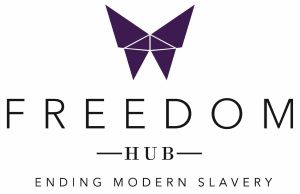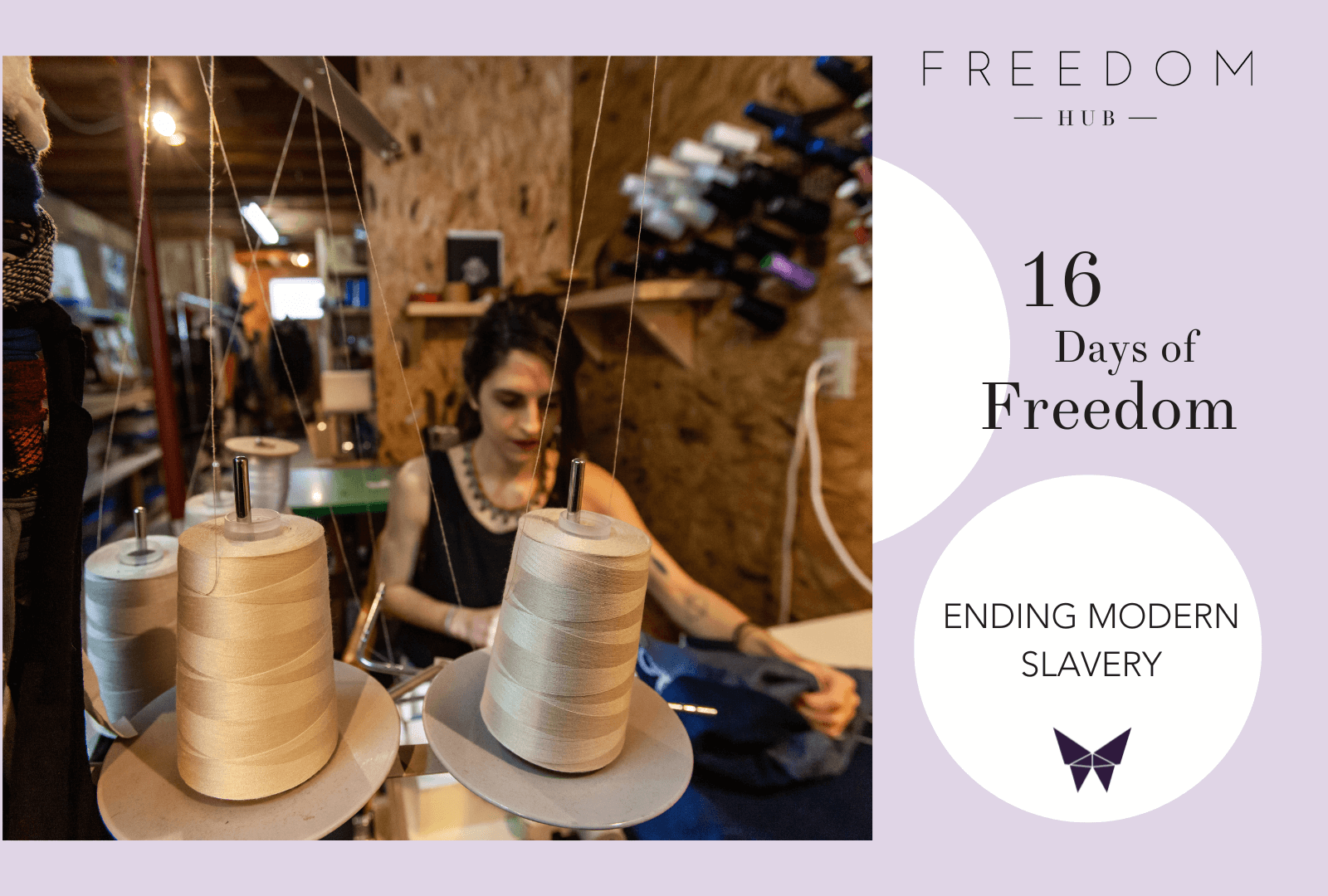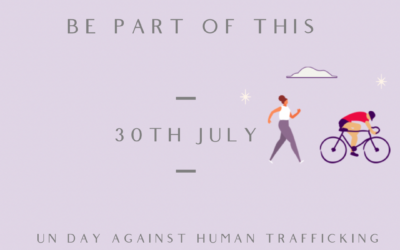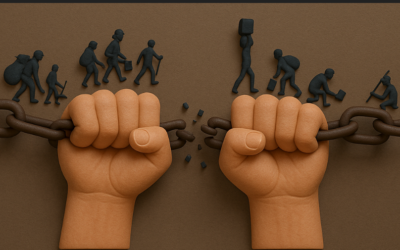In today’s world, it has never been easier to have the latest fashion trends at your fingertips. With a few clicks of a button, we can have almost anything delivered to our door in days. It is convenience-driven consumerism. But, to put it simply, when a price tag on a new shirt seems too good to be true, it most probably is.
Susceptible to slavery
The fashion and garment manufacturing industries are one of the most susceptible to modern slavery. From raw materials to manufacturing, labour exploitation and modern slavery are rife in global garment supply chains. Workers in the industry are often vulnerable to forced labour, wage theft, hazardous conditions, illegal overtime, and more. With garment supply chains often operating in locations where laws protecting human rights do not exist, are weak, or are not enforced, companies’ action to eradicate modern slavery from their supply chains becomes even more integral.
The global fashion industry employs 50 million people worldwide, making it the most labour-intensive industry in the world. However, less than 2% of this workforce earns a living wage. The push for consumerism, mass production and the constant demand for more provides ample opportunity for the abuse and exploitation of the people who are making our clothes.
Whilst men are also victims of this crime, women and children are the more vulnerable demographic. They make up over 70 per cent of all people living in slavery around the world and, consequently, are the main victims of slavery in the fashion industry as well. Victims of Modern Slavery often come from situations of extreme poverty and are unable to break the cycle due to the exploitation that they experience. For example, in the garment industry, workers take on a high-interest loan from employers and are then forced to work for little or no income to repay their debt. This can become an intergenerational problem of exploitation and structural inequality, as women are often told the debt will transfer to their family if they leave.
Made in poverty
In 2019 Oxfam interviewed 472 garment workers and released their findings in a report called ‘Made in Poverty – The true price of fashion’. These workers were from Vietnam and Bangladesh, two of Australia’s key sourcing countries.
The report revealed that:
- Nine out of 10 workers interviewed in Bangladesh cannot afford enough food for themselves and their families, forcing them to regularly skip meals and eat inadequately or go into debt.
- 72% of workers interviewed in Bangladesh factories supplying major brands in Australia, and 53% in Vietnam, cannot afford medical treatment when they get sick or injured.
- 76% of workers interviewed in Bangladesh factories supplying to major brands in Australia have no running water inside their homes, and more than 40% in Vietnam reported worrying about having to use wells or rainwater.
- In Bangladesh, one in three workers interviewed are separated from their children, with nearly 80% of those cases due to a lack of adequate income.
Additionally, a Deloitte Access study for Oxfam found that factory workers were, on average, paid 4% of a garment’s retail sale price. That means when a $25 dress is sold in a fast-fashion house, only $1 goes into the pocket of a worker.
Small will culminate in bigger impacts
This can all be overwhelming – but there are small ways in which we can attempt to reduce our impact on Modern Slavery.
Firstly, it can help to research the companies that you shop with most often. Baptist World Aid, a not-for-profit organisation has created an annual Ethical Fashion Guide. This guide allows shoppers to know whether the brands they are buying from are making efforts to mitigate the risks of slavery. If you are wondering how much of an impact this can have, according to their findings, Baptist World Aid has noticed that 4% of the companies assessed improved their scores between 2019 and 2021. While this may seem like a low number, over time, small changes will culminate in bigger impacts. You can also use tools such as ‘Know the Chain’ and ‘Good on You’, which also rate brands and companies on their sustainability and ethics.
If your favourite brand is not currently scoring highly on these platforms, you can encourage them to make a change. It’s as simple as contacting them and asking:
Do they have an ethical recruitment policy?
How do they ensure the raw materials that go into their garments are ethically sourced?
What have they done to support their suppliers and vulnerable workers in their supply chains through the pandemic?
Shop local and sustainable
Another option would be to shop locally, in doing this, it can be easier to determine where your fashion is coming from. You can start by visiting local markets to find unique and hand-made pieces. As a result, you can make sure that what you are buying is ethically made. Additionally, you would also be supporting your neighbours with their small businesses. If you’re not sure where to start, you can try and look online for local small businesses.
One great website is ’Britt’s List’, which is an excellent resource for finding sustainable fashion in Brisbane. The Founder and Editor of the site, Brittanie Dreghorn, also hosts ‘Sustainable Fashion Walking Tours in Brisbane’, where you can learn about sustainable fashion while being introduced to ethical and locally made brands. One of the many local businesses that ‘Britt’s List’ has showcased is ‘Outland Denim’, this brand is based in Mount Tambourine but also has an online store. They have gone to lengths to ensure that their fabrics are sourced sustainably, and their products are made ethically, so much so that they have the name of the individual seamstress on each pair of jeans produced.
Op shops and second-hand clothing
Of course, one of the main reasons that fast fashion is so successful is the price. Often, hand-made items and even sustainably made items are much more expensive, and not everyone is able to afford this, particularly with the rising cost of living. However, in recent years, second-hand shopping has made a powerful resurgence. Second-hand stores bring with them the fun experience of finding an unexpected bargain. Also, it is a sure way to know that you are shopping ethically and slowing down fashion. This also results in less landfill. By lengthening the lifespan of a clothing item, you are helping to lessen the constant demand on garment makers in the fashion industry.
Conscious consumerism
While Modern Slavery is a global issue and can sometimes seem overwhelming, if we are all able to make small changes, this will culminate in a larger impact. We need to remember we vote for the kind of world we want to live in with every purchase we make. One of the easiest ways to help the people on the frontline making our clothes is to ask the question, ‘who made my clothes?’ Brands must be able to answer that question with complete transparency, and if they can’t, don’t spend your money with them. As consumers, we have the power to push companies to take accountability and to make changes in their supply chains to ensure that their workers are not being exploited. While there is a long way to go in eradicating Modern Slavery, every small change that we can make will help in reaching this goal.
If you want to find out more information on Modern Slavery and the work that The Freedom Hub does, you can check out our website or contact us directly if you have any ideas or suggestions for future events or fundraising ideas. We are also always looking for more volunteers, so please get in touch if you would be interested in learning about our volunteer opportunities.




